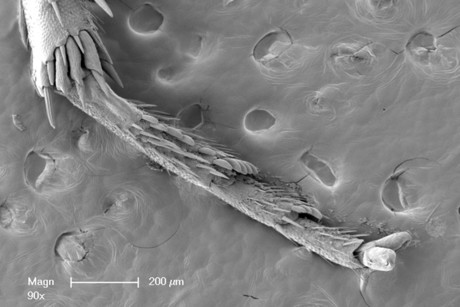Jumping without slipping: the secret of the leafhopper

UK researchers have uncovered the secret behind the explosive leaping ability of leafhopper insects — a discovery that could help create better technology in the future.
The seven-year study found that leafhoppers use tiny adhesive pads on their hind legs to provide stability as they propel themselves at g-forces as high as 40–50 g. Led by Dr Christofer Clemente from the University of Cambridge, the researchers used a high-speed photron camera capable of filming 4700 frames per second to capture the movement.
“These are phenomenally fast jumpers,” said Dr Clemente, a lead author on the study published in the Journal of the Royal Society Interface. “They can go from the pre-jump stage — where they’re simply sitting there — to being in the air in milliseconds.”
The leafhoppers’ sticky pads are only activated when extreme speed is required, enabling the insects to rapidly launch themselves into the air even from smooth surfaces like glass. Dr Clemente noted, “The insects don’t need to have the stickiness activated when they’re walking around, because it might get damaged or contaminated. This type of velocity-dependent adhesion is something that has never been seen before.”
Dr Clemente said the physiological attributes that contributed to the leafhopper’s jumping ability could be applied to a range of technologies, suggesting, “The principles from the leafhopper could be used to design a small robot that moves around autonomously and uses explosive jumps to overcome obstacles.
“There would be a whole range of applications for that style of robot, but I’m particularly interested in the potential for disaster recovery, such as after an earthquake.
“We could also take the principles of a velocity-dependent adhesive into the area of transport — imagine designing a brake system that’s only active when you start travelling over a certain speed.”
Leafhoppers are also known to cause significant damage to many agriculture crops, said Dr Clemente, so knowing more about their movements may give scientists a better chance of controlling them.
Colon cancer DNA in blood can guide chemo decisions
A simple blood test could change how doctors decide which patients with colon cancer need...
Non-invasive blood test helps rule out oesophageal cancer
Designed and developed in Australia, the PromarkerEso test is designed to offer a quick,...
Taste-based flu test enables rapid diagnosis
The diagnostic tool consists of the sensor molecule thymol and a virus-specific sugar building...



